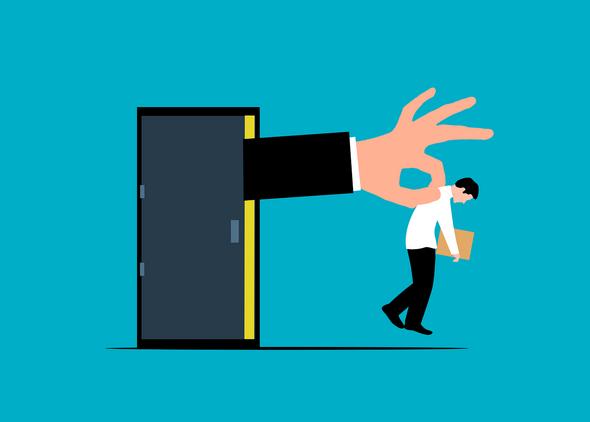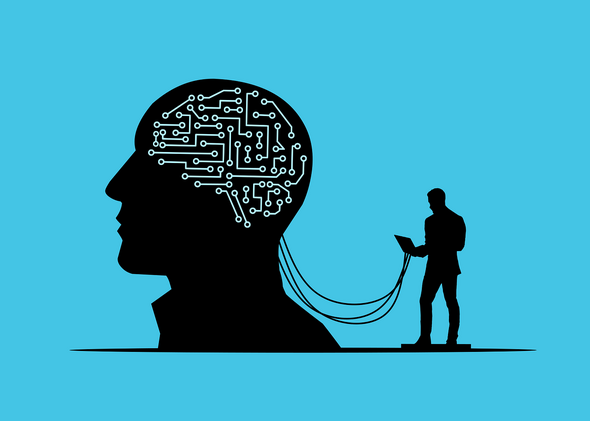Table of Contents
Why Hypnotic Stagnation Happens (And Why It's Actually Good News)
The 5 Warning Signs Your Practice Has Plateaued
Sign #1: You Feel Like You're Just "Reciting Words"
Sign #2: You Can't Get Deeper Than Surface Relaxation
Sign #3: You're Easily Distracted and Can't Stay Focused
Sign #4: You're Not Seeing Real-World Changes
Sign #5: It Feels Like a Chore Instead of a Gift
The Plateau Paradox: Why This Happens Right Before Breakthroughs
The email arrived at 11:47 PM on a Tuesday:
"I've been doing self-hypnosis for six months. At first, it was amazing—I felt calmer, slept better, had more confidence. But now... nothing. I sit there for 20 minutes saying the same words, and it feels like I'm just talking to myself. Did I break something? Am I doing it wrong now?"
The sender was Mark, a software engineer who'd initially had remarkable success with self-hypnosis. He'd overcome his presentation anxiety, improved his sleep, and felt more centered than ever. But somewhere along the way, his practice had flatlined.
Sound familiar?
This pattern—initial success followed by a frustrating plateau—is what I call "hypnotic stagnation." In my 10 years as a self-hypnosis coach, I've seen it happen to hundreds of practitioners who continue past the three-month mark. The good news? It's completely fixable once you understand what's happening.
Mark's breakthrough came when we identified that his subconscious had outgrown his original scripts. Within two weeks of adjusting his approach, he was experiencing deeper states than ever before. "I didn't realize my practice needed to evolve as I did," he told me. "Now it feels alive again."
Why Hypnotic Stagnation Happens (And Why It's Actually Good News)
Most people think a stalled practice means they're failing. Actually, it often means they're succeeding too well.
Here's what my decade of coaching has taught me: your subconscious mind is incredibly adaptive. The techniques that worked brilliantly at the beginning can become ineffective as your mental patterns shift and your goals evolve. What feels like failure is actually your mind asking for a more sophisticated approach.
Dr. Milton Erickson, the father of modern hypnotherapy, observed that effective hypnosis must constantly adapt to the client's changing internal landscape. This principle applies doubly to self-hypnosis, where you're both the practitioner and the subject.
The 5 Warning Signs Your Practice Has Plateaued
After analyzing hundreds of "stuck" practitioners, I've identified five clear indicators that your self-hypnosis practice has stagnated. More importantly, I've developed specific diagnostic questions and quick fixes for each.
Sign #1: You Feel Like You're Just "Reciting Words"
What it looks like: You go through the motions of your session, but the words feel hollow. You're speaking to your subconscious, but it doesn't feel like anyone's listening.
Diagnostic question: "When I repeat my suggestions, do I feel any emotional resonance, or am I just waiting for the session to end?"
Why it happens: Your original language has become stale. Your subconscious mind has habituated to your suggestions and essentially "tuned out."
The quick fix: Switch your suggestions from first person to second person (or vice versa). Instead of "I am confident," try "You are becoming more confident with each passing day." This simple change can reactivate your subconscious attention.
Success story: Lisa, a marketing manager, had been using "I am creative" for months with no effect. When we changed it to "I have unlimited creative potential flowing through me," she had three breakthrough ideas in her first week.
Sign #2: You Can't Get Deeper Than Surface Relaxation
What it looks like: You relax physically but never reach that profound, almost dreamlike state where real change happens. You're conscious of every sound, every thought, every distraction.
Diagnostic question: "Am I reaching a state where time seems to pass differently, or am I just sitting with my eyes closed?"
Why it happens: You've hit what I call the "relaxation ceiling"—your usual induction gets you to basic calm but can't take you deeper.
The quick fix: Add a "deepening bridge" to your session. After your usual induction, count down from 10 to 1, saying "deeper and more relaxed" with each number. Then repeat the countdown, going even deeper.
Success story: Tom, an accountant, had been stuck in light relaxation for months. Adding a three-stage deepening sequence (10-to-1, then 5-to-1, then 3-to-1) finally got him to the profound states he'd experienced initially.
Sign #3: You're Easily Distracted and Can't Stay Focused
What it looks like: Every noise pulls you out. Your mind wanders constantly. You spend more time fighting distraction than actually doing hypnosis.
Diagnostic question: "Am I working with my mind's natural tendencies, or constantly fighting against them?"
Why it happens: You're trying to force focus instead of allowing it to develop naturally. Most people make hypnosis harder than it needs to be.
The quick fix: Instead of fighting distractions, incorporate them. When you hear a noise, think "That sound is helping me go deeper." When your mind wanders, think "And as my mind wanders, I'm finding my way to deeper relaxation."
Success story: Jennifer, a teacher, was constantly frustrated by her noisy apartment building. When she started using external sounds as "deepening cues," her focus improved dramatically. "Now I actually prefer doing hypnosis when there's some background noise," she told me.
Sign #4: You're Not Seeing Real-World Changes
What it looks like: Your sessions feel fine, but nothing's changing in your daily life. You're relaxed during hypnosis but stressed as soon as you open your eyes.
Diagnostic question: "Are my suggestions connecting to specific situations and behaviors, or are they too general?"
Why it happens: Your suggestions have become too abstract. "I am confident" doesn't give your subconscious enough specific guidance about how to be confident.
The quick fix: Create "bridge suggestions" that connect your hypnotic state to real situations. Instead of "I am calm," try "I carry this feeling of calm into my meetings, my conversations, and my daily challenges."
Success story: David, a sales professional, was frustrated that his confidence sessions weren't helping with client calls. When we changed his suggestions to "I feel centered and articulate during every client conversation," his closing rate improved by 40%.
Sign #5: It Feels Like a Chore Instead of a Gift
What it looks like: You dread your sessions. You keep putting them off. What once felt nourishing now feels like another task on your to-do list.
Diagnostic question: "Am I doing hypnosis because I want to, or because I think I should?"
Why it happens: You've lost connection to why you started. Your practice has become routine instead of purposeful.
The quick fix: Reconnect with your "why." Before each session, spend 30 seconds remembering what you want to achieve and why it matters to you. Let that motivation guide your session.
Success story: Maria, a nurse, had been forcing herself through sessions for weeks. When we reconnected her practice to her deeper goal of being more present with her patients, her enthusiasm returned immediately. "I remembered that this isn't about me—it's about who I can become for others," she said.
The Plateau Paradox: Why This Happens Right Before Breakthroughs
Here's something I've observed repeatedly: practitioners often experience their deepest stagnation right before their biggest breakthroughs. It's like your subconscious mind is preparing for a major upgrade and needs to clear out the old programming first.
In my experience, practitioners who work through their plateau report achieving deeper states and better results than they experienced initially. The key is recognizing that stagnation isn't failure—it's preparation.
Why Generic Troubleshooting Doesn't Work
Most hypnosis resources offer one-size-fits-all solutions to practice problems. But after working with hundreds of stalled practitioners, I've learned that everyone gets stuck in different ways and for different reasons.
Visual people get stuck differently than auditory people. Analytical minds hit different walls than intuitive minds. Perfectionists stagnate differently than experimental types.
The practitioners who break through their plateaus fastest are those who identify their specific stagnation pattern and use targeted solutions designed for their unique mental processing style.
But here's the crucial question: what's your personal stagnation pattern? What specific subconscious metaphors and approaches will reignite your practice most effectively?
Understanding your unique way of getting stuck—and unstuck—is the difference between generic troubleshooting and targeted transformation. It's the difference between hoping your practice will improve and systematically upgrading it for deeper, more consistent results.
The Stagnation Sweet Spot
After a decade of coaching, I've realized that every practitioner's stagnation is actually a doorway to deeper mastery. The techniques that got you started aren't meant to carry you forever. Your practice needs to evolve as you do.
The most successful practitioners I work with view stagnation as valuable feedback, not frustrating failure. They understand that their subconscious mind is asking for something more sophisticated, more personalized, more aligned with who they're becoming.
Your stalled practice isn't a dead end—it's a intersection. You can keep doing the same thing and stay stuck, or you can upgrade your approach and breakthrough to levels you've never experienced.
The choice is yours. But remember: most breakthroughs happen just on the other side of what feels like failure.
Don't Give Up Right Before Your Breakthrough
In my decade of coaching, I've seen too many practitioners abandon their practice right when they were on the verge of major breakthroughs. The difference between those who push through and those who quit isn't willpower—it's having the right diagnostic tools and targeted solutions.
Your stalled practice isn't telling you to quit. It's telling you to evolve.
The signs I've shared aren't problems to endure—they're puzzles to solve. And once you solve them, your practice doesn't just return to its previous effectiveness. It reaches new levels of depth and power.
Mark, the software engineer from my opening story, now describes his hypnosis practice as "the most important 20 minutes of my day." His breakthrough came not from trying harder, but from understanding why he was stuck and making specific adjustments.
Your breakthrough is waiting on the other side of your stagnation. The question is: are you ready to find it?
Recognize these signs? A stalled practice is the #1 reason people give up right before a breakthrough.



